#Plankton Repellent
Explore tagged Tumblr posts
Text
youtube
1 note
·
View note
Text
Club Furies Premiere: Planctophob - 33 Polyhymnia (Album Version) [Plankton Repellent]
Introducing Nik Matern, electronic music producer and DJ, founder of the Plankton Repellent label, and pioneer of the dark minimal genre. He is known under several aliases, each dedicated to a different genre. Planctophob is one of Matern‘s main projects, created in 2012. According to the main idea, “Planctophob” is a person whose only fear is to become a part of the drifting, aimless, and…
#33 Polymnia#Ambien Techno#CF Premiere#club furies#Club Furies Premiere#Contemporary Electronics#Dark Minimal#Electronic#Electronic Music#Electronica#Germany#Planctophob#Plankton Repellent#Premiere#Rotating LP#techno
0 notes
Text
You know what Alola has a lot of? Water. And when there’s lots of water you get lots of aquatic Pokémon. Welcome back to the series where I discuss the real-life inspirations of every aquatic, non-fish Pokémon. This time I’m covering gen VII. To see previous entries in this series see gen I part 1, gen I part 2, gen II, gen III, gen IV, gen V, and gen VI. For my previous series where I covered the origins of all fish Pokémon see here. As before, starters and legendary/mythical Pokémon will be covered in a separate series. I’ll also cover ultra beasts separately, so no Nihilego this time.
Starting things off we have Marenie and Toxapex bringing us the first echinoderms since gen I. While Staryu and Starmie were generic starfish, the Marenie line are based specifically on the crown-of-thorns starfish.
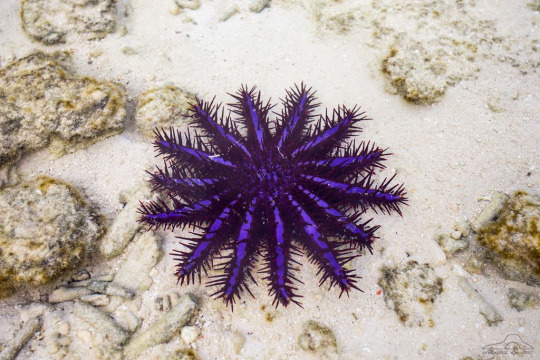
(image: a crown-of-thorns)
These are large starfish covered with venomous spines. The spines are used for defense as they (and the starfish’s other tissues) are filed with a chemicals called saponins. While there is no mechanism for injecting venom, any animal punctured by a spine will get the venom in the wound. It is hemolytic, causing destruction of red blood cells, which can lead to the injured animal suffocating or bleeding out. In addition, the spines are brittle and can break off and get stuck in a wound. In humans, the venom can cause sharp, stinging pains, persistent bleeding, and swelling and nausea for up to a week after the sting. The persistent nature of the pain and hemolysis may be the basis for the line’s signature ability “Merciless”. The other big feature of the crown-of-thorns is its diet. They feed on coral polyps by everting their stomachs onto coral and digesting them externally. This is why the line are specifically stated to prey on Corsola. Too many crown-of-thorns in one coral reef can badly damage it, hence why Toxapex is said to leave a trail of Corsola horns in its wake. Toxapex also takes influence from the hā’uke’uke or helmet urchin, a species found in Hawaii that is shaped very similar to Toxapex’s tentacles when they are all down.

(image: a hā’uke’uke)
Dewpider and Araquanid are based on diving-bell spiders. These spiders spend almost their entire lives underwater, the only species to do so. They do still need to breathe air and so used a coating of water-repelling hairs to carry a bubble of oxygen with them when they are underwater, surfacing occasionally to refresh their supply. The Dewpider line are the inverse of that: a species that can only breathe water and need to bring a bubble of water with them while they live on land. Because of this, they may also be based on sea spiders, a group of marine arthropods that look very similar to spiders. This origin is more noticeable with Araquanid, which has the skinny body and long legs of sea spiders. In both species, the bubble over the head is based on a diving helmet.
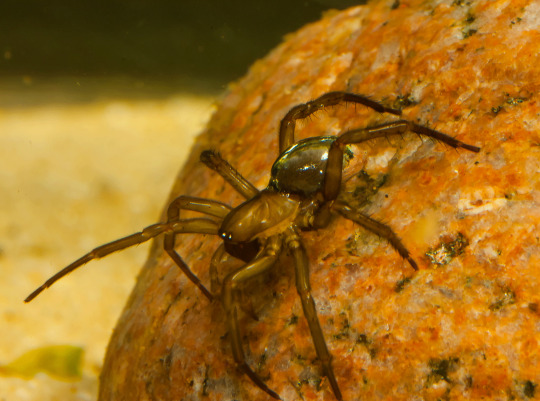
(image: a diving bell spider with its air bubble visible)
Wimpod is one of my favorite gen VII mons and its origin is complex. It is based on a variety of aquatic arthropods. Most notably it resembles an isopod while having a head similar to a trilobite.
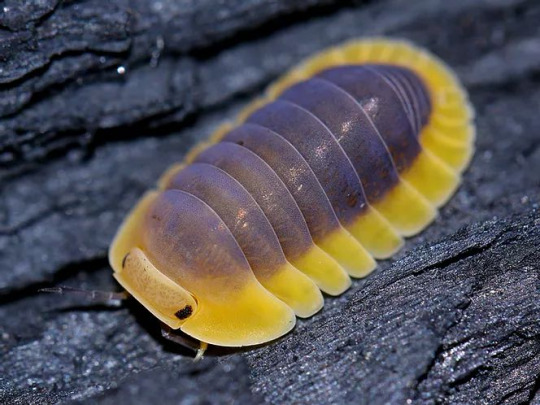
(image: a terrestrial isopod)
It also looks like a copepod, which are zooplankton that have prominent antennae. Fun fact: Plankton from Spongebob is a copepod.
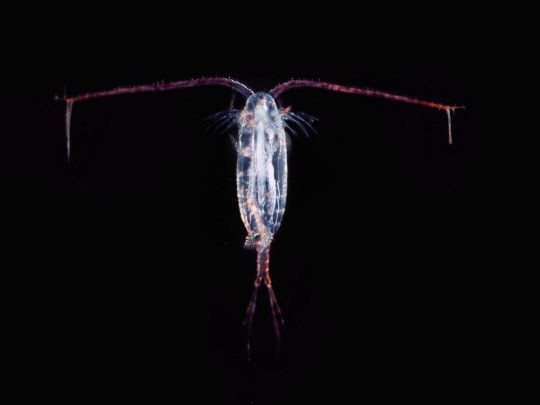
(image: a copepod)
Wimpod’s behavior of fleeing at the first sign of danger is very similar to silverfish. These are insects with a similar body shape to Wimpod that are famous to coming out in the dark and fleeing once the lights come on.

(image: a silverfish)
Wimpod’s habit of eating almost anything and leading a clean path as it travels makes it effectively a living Roomba. As Golisopod, it is based on the giant isopod, a group of species that are much larger than the average isopod thanks to deep-sea gigantism. This is a phenomenon where animals living in the deep ocean become larger than their shallow-water relatives and has a number of proposed causes. The largest and most famous of the giant isopods reaches a maximum recorded length of 50 cm (19.65 in), which is still quite a bit shorter than Golisopod’s 2 m (6’7”). It is also based on samurai as its shell resembles samurai armor and some of its behavior (such as meditation) comes from samurai stories. Its ability to cleave the air in twain with its claws likely comes from classic exaggerations of a warrior’s ability. Golisopod doesn’t care much for a samurai’s code of honor though, as it will happily fight dirty and run from fights.
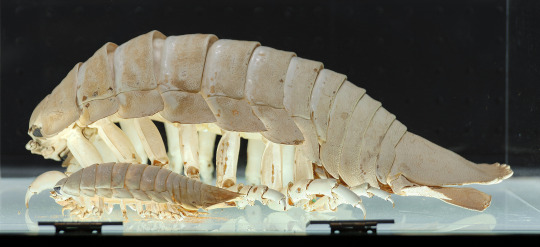
(image: preserved specimens of two giant isopod species)
Gen VII was a good one for echinoderms as coming off the hells of the starfish Marenie line we get a sea cucumber in Pyukumuku. Sea cucumbers have a pretty simple body plan, basically looking like tubes. Their most famous ability is a defense strategy some species employ where they can eject part of their guts to deter predators. In real sea cucumbers, the ejected guts will regenerate while in Pyukumuku, they can retract back into the body and even act like a hand. Sea cucumbers also have external gonads that look like strings. The fluffy tail Pyukumuku has is actually its genitals. The spikes on top might be based on sea urchins, which are relatives of sea cucumbers.
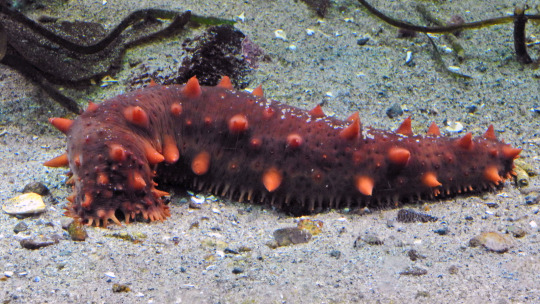
(image: a sea cucumber with similar spines to Pyukumuku)
Our final Pokemon for today is Dhelmise and it’s a weird one. An anchor and ship’s wheel bound together and possessed by the ghost of seaweed. What confuses me is that it’s a wooden anchor. It turns out wooden anchors were used at one point in early boats, but were phased out in favor of ones made of iron. Dhelmise being haunted parts of ships is reminiscent of tales of ghost ships, though on a smaller scale. The seaweed on it may be dead man’s fingers, which grows small tendrils and the name is obviously fitting for a ghost-type.
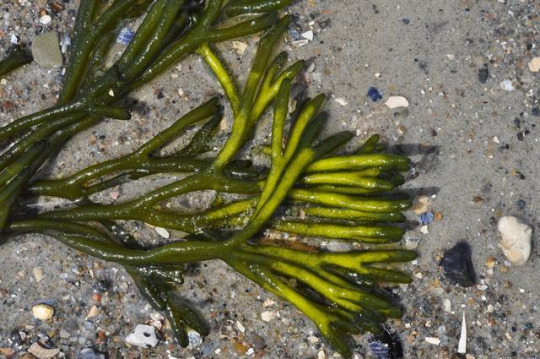
(image: dead man's fingers)
The shiny version having red seaweed could reference red tide, a type of algal bloom that can turn parts of the ocean red. Dhelmise hunts Wailord, meaning it may have been a part of a whaling ship and now the ghosts within it are carrying out their last tasks endlessly, a common trope in ghost stories. It may also reference Moby Dick’s Captain Ahab and his obsessive quest to kill the white whale.
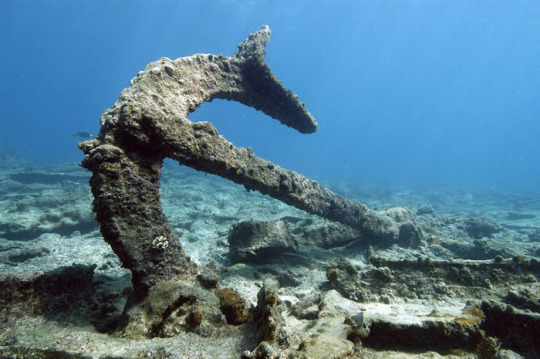
(image: a sunken anchor from a shipwreck in Hawaii's Papahānaumokuākea National Monument)
That’s all for now. Return next time when we go to Galar.
#pokemon#pokemon biology#pokemon lore#pokemon origins#marine biology#aquatic biology#animal facts#zoology#marenie#toxapex#dewpider#araquanid#wimpod#golisopod#pyukumuku#dhelmise#starfish#crown of thorns#diving bell spider#isopods#trilobite#copepods#giant isopod#sea cucumber#echinoderm#anchor#silverfish
223 notes
·
View notes
Text
Hi!
In the UK, last week was biology week and I REALLY wanted to get this finished to celebrate. Unfortunately, I have been incredibly busy with coursework and only managed to finish this up yesterday. So, for my sake, imagine this was posted last week. Without further ado:
——————————————————————————
Dinoflagellates
Superclass- Dinoflagellata
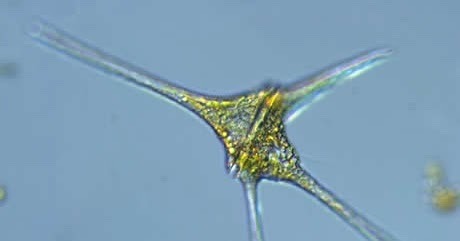
Pictured: Ceratum lineatum
Dinoflagellates are plankton belonging to the superclass “Dinoflagellata”, a clade containing aquatic algae. Though often found in marine environments, dinoflagellates can be found in almost all aquatic environments. They are the bottom of most aquatic food chains and are responsible for many natural phenomena, like glowing beaches and even potentially one of the great plagues of Egypt!

Pictured: an anatomical diagram of a dinoflagellate
Dinoflagellates are covered by a theca (sheath) that can be either plain or ornamented and have two flagella (tails). One is a longitudinal flagella which propels the dinoflagellate forward and the other is a transverse flagella which provides spin to the algal cell.
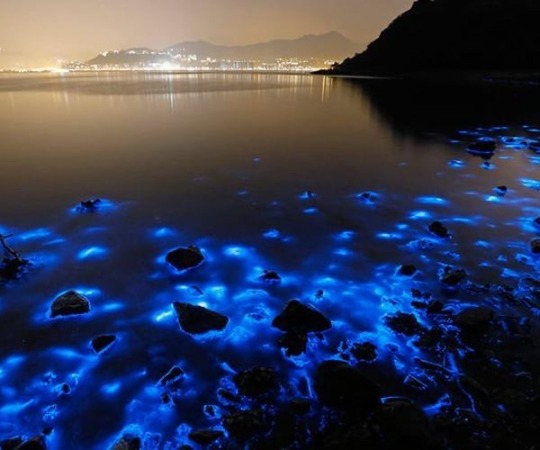
Pictured: glowing shore caused by dinoflagellates
So, about glowing oceans, they’re caused by some genera of dinoflagellates that contain “Scintillons” which are, essentially, cellular glow sticks. Dinoflagellates light up when they are contacted, causing beautiful displays of light on turbulent shorelines. This bioluminescence is thought to be a response to predation. It sounds strange, producing dazzling light to deter predators, but the lights aren’t to repel predators, they’re to attract the predators of the predators. Like setting up a giant neon sign saying “This guy is eating me and they’re REALLY tasty”. They tend to build up in warm lagoons with limited access to the open sea and glow a bluish colour. Dinoflagellates produce a compound called “luciferin” which reacts with an enzyme called “luciferase”, and this reaction is what causes the light.
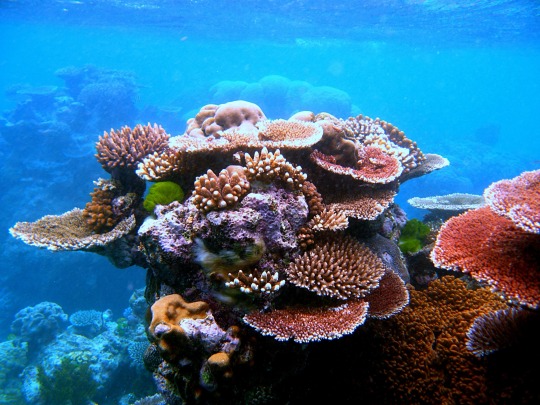
Pictured: a coral reef
Aside from being rave algae, dinoflagellates also form symbiotic relationships with many different organisms. Sponges, molluscs and some bacteria just to name a few, they form so many that the family they lie in is called “symbiodinium”. The most notable- though- is their relationship with coral. Coral as we know it is composed of coral polyps and dinoflagellates- or zooxanthellae as those able to form symbiotic relationships are known colloquially. In these relationships, zooxanthellae offer amino acids and products of photosynthesis and in return get carbon dioxide for photosynthesis as well as phosphates and nitrates. Colonies of coral polyps and zooxanthellae comprise coral reefs, responsible for upholding many tropical ecosystems in our beautiful oceans. When these colonies experience high environmental stress, the polyps will expel the zooxanthellae, resulting in coral bleaching, where coral reefs lose their colour and die; Coral bleaching is also a major problem our oceans are facing due to factors like ocean acidification and pollution.
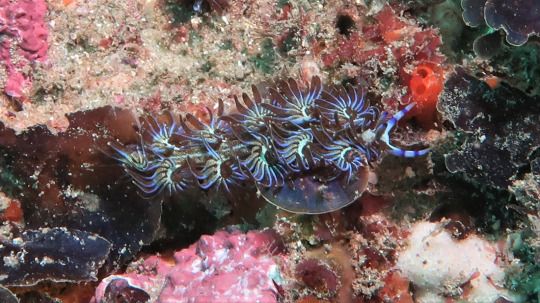
Pictured: Pteraeolidia semperi
Zooxanthellae also form symbiotic relationships with nudibranchs, specifically aeolid nudibranchs from the genus Pteraeolidia; aeolid nudibranchs are those with long tubules sprouting from their backs, those in the genus Pteraeolidia look comparable to Christmas tinsel. In these relationships, the zooxanthellae live in the nudibranchs’ tissue and supplement their diet with photosynthetic products. For more information, look into the work of Professor Ove Hoegh-Guldburg and Professor Rosalind Hinde.
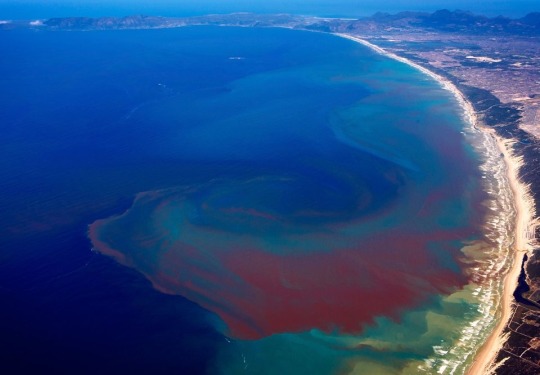
Pictured: a red tide
Dinoflagellates also are thought to have caused one of the 10 plagues of Egypt. Dinoflagellates are known to cause “red tides”, where masses of algae grow on the surface of water. Red tides do crazy evil things, like killing fish, making shellfish poisonous and even emitting toxic aerosols that cause burning sensations in throats and noses. Stalagmite records show that during the plagues, Egypt experienced a great drought. It is thought that this drought caused an algal bloom in the river nile, causing water to become undrinkable, fish to die and amphibian numbers to boom before they escaped the river. It’s important to note that while dinoflagellates are a kind of algae that is known to bloom in this way, some evidence points to algae that do not belong to the superclass dinoflagellata as the cause of this plague. Regardless, the marriage of religion, history and biology is very interesting.
#biology#marine biology#sea creatures#biodiversity#plankton#photosynthesis#coral reef#nudibranch#algae
6 notes
·
View notes
Text
Jellyfish
The Mystique of the Jellyfish: Nature’s Delightful Drifters
Jellyfish has long played host to the questions of ocean-dwellers as one of the most endearing and alien-looking creations in the ocean. With their translucent and gelatinous bodies, pulsating motions, and exaggerated bioluminescent halos, they seem wonderfully whimsical. Fragile as they may be, jellyfish have, for longer than 500 million years, stared their luck in the face, thereby earning them a streak of the ancient organisms of the world. Diving into the ocean to unearth these enchanting marine life in an effort to know them better.
What Are Jellyfish?
Jellyfish are not true fish; they belong to the phylum of aquatic animals called the Cnidarians, which also encompasses corals and sea anemones. Composed of 95% water, they completely lack a brain, heart, or bones; they only rely on a simple nerve net for sensing their surroundings and coordinating their movements.
How Do Jellyfish Survive Without a Brain?
Though it might seem impossible for an animal not to operate under a brain, a jellyfish has simply evolved to suit its environment. The nerve network makes it aware of light changes, water currents, and the presence of a predator or prey. It is such a simple, efficient system that jellyfish are largely independent of many ocean conditions.
A Magical Bioluminescence
Bioluminescence produces light by living organisms, and it is one of the many fascinating features of jellyfish. In various jellyfish species, this bioluminescence can serve many functions, from luring prey to repelling predators or facilitating communication with other jellyfish.
Jellyfish and the Ecosystem Jellyfish are very important actors in marine ecosystems. They very much are both prey and predator as they provide food for sea turtles, sunfish, and other marine animals while feeding on plankton, small fish, and other jellyfish. However, sometimes, such species grow too much in numbers, resulting in ‘blooms of jellyfish’ disrupting local ecosystems.
Fun Facts About Jellyfish The Immortal Jellyfish: Turritopsis dohrnii is the only one of its kind capable of reverting back into its juvenile form even after it attains maturity. This renders it biologically immortal. Record Size: The lion’s mane jellyfish (Cyanea capillata) is considered to be the biggest, even to this day, with tentacles that reach over 120 feet. In the Bag: Box jelly is among some species of jellyfish that often produce highly venomous stingers, the impact of which may be painful and even life threatening.
Jellyfish and Interactions with Humans Much to the interest of marine biologists, jellyfish has in recent years sparked an interest for applications in other industries in the fields of cosmetics and medicine. These are being researched in gelatin, antibiotic preparations creams for the skin, certain proteins from jellyfish aiding in studies of bioluminescence and nerve regeneration.
Conservation of the Drifters of the Ocean Nevertheless, even though jellyfish are hardy creatures, they are not exempt from the threats posed by climate change and pollution. Increased ocean temperature and overfishing of predators, among others, may enhance jellyfish populations, whereas plastic trash often looks quite similar to their favorite fare: plankton.
Conclusion Jellyfish themselves are a proof of nature’s creativity; on account of their simple yet clever design, they thrive for millions of years. From their deep retreats in the ocean, these weightless creatures are reminders of the beauty and intricacies of marine life. By continuing to protect their habitats and realize their role in an ecosystem, we will assure jellyfish remain part of our planet’s oceans for generations ahead.
Contact Us Have questions or want to learn more about the fascinating world of Archerfish and other unique species? Reach out to us!
📧 Email: [email protected]
📞 Phone: +91 8826 944 023
🌐 Website: www.fishingproo.com
📍 Location: san francisco
#fishingproo #fisher
0 notes
Text
Undiscovered Islands: Koh Rong, Cambodia
Koh Rong, Cambodia the secret eden garden Imagine pristine beaches with powdery white sand, crystal-clear waters teeming with vibrant marine life, and lush jungles whispering with the songs of exotic birds. Welcome to Koh Rong, Cambodia’s tropical paradise and one of Southeast Asia’s hidden gems. While Koh Rong has gained popularity over the years, there are still untouched corners of this island waiting to be explored. For travelers seeking adventure, tranquility, or simply an escape from the ordinary, here’s why Koh Rong should top your list.
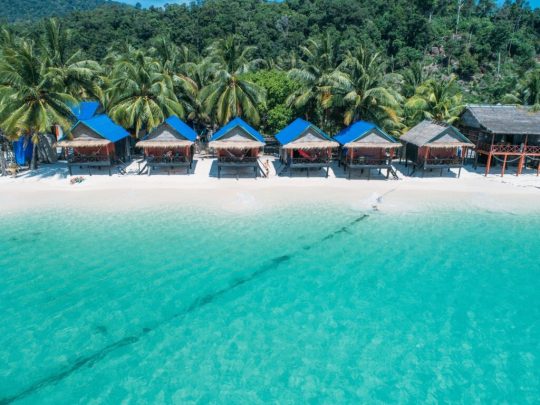
Beaches Beyond the Beaten Path: Discover Koh Rong's Hidden Gems While most visitors flock to Koh Touch, the island's bustling main hub, Koh Rong holds a treasure trove of lesser-known beaches that promise tranquility, natural beauty, and unique experiences. Here’s a closer look at some serene spots worth exploring: 1. Long Set Beach (4K Beach) - Highlights: - A pristine, expansive stretch of white sand that seems to go on forever. - Calm, shallow waters ideal for swimming and sunbathing. - Perfect for couples or solo travelers seeking a picturesque and peaceful setting. - Pro Tip: - Visit during sunset for breathtaking views and bring a good book for ultimate relaxation.
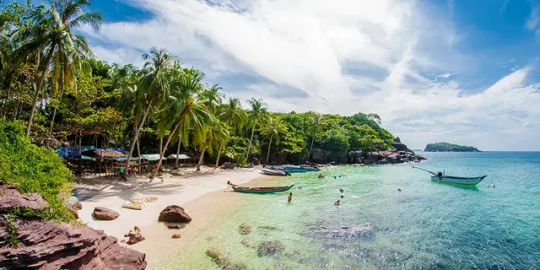
2. Coconut Beach - Highlights: - A quiet, family-friendly beach surrounded by lush coconut groves. - Gentle waves make it safe for children to play and swim. - Pro Tip: - Pack a picnic and enjoy a relaxed day under the shade of swaying coconut palms.

3. Lonely Beach - Highlights: - True to its name, this secluded beach is a haven for those seeking solitude. - Untouched by large-scale tourism, the area offers raw natural beauty. - Pro Tip: - Ideal for meditation or simply disconnecting from the world. Bring supplies, as facilities are limited.
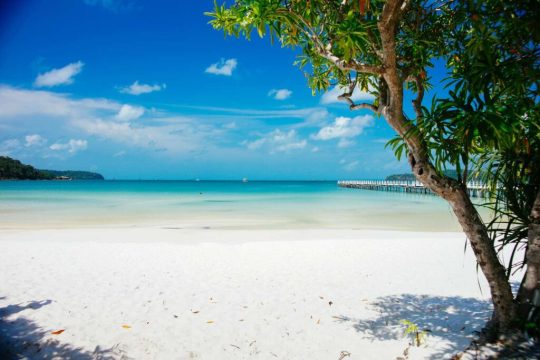
4. Sok San Beach - Highlights: - Nestled near a traditional fishing village, this beach offers a unique blend of local culture and stunning scenery. - A great spot for immersing yourself in authentic island life. - Pro Tip: - Take time to explore the nearby village and enjoy fresh seafood prepared by locals.
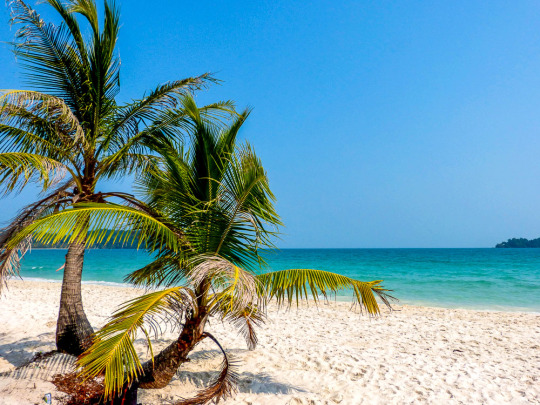
5. Pagoda Beach - Highlights: - Famous for its crystal-clear turquoise waters and vibrant marine life. - A prime location for snorkeling and spotting colorful fish. - Pro Tip: - Bring your snorkeling gear or rent it locally for an underwater adventure you won’t forget.
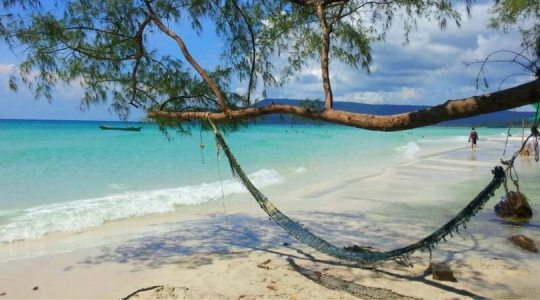
Insider Tips for Visiting Koh Rong's Hidden Beaches - Transportation: Most beaches are accessible by boat or a scenic trek through the island's lush jungle. Plan ahead and check local guides for transport options. - Best Time to Visit: November to April offers the best weather with calm seas and clear skies. - Essentials to Pack: Sunscreen, insect repellent, reusable water bottles, and a sense of adventure. Why Explore Beyond Koh Touch? These lesser-known beaches on Koh Rong offer a refreshing escape from the crowds, providing unforgettable moments of peace and natural beauty. Whether you're seeking a romantic getaway, a family-friendly retreat, or a solo adventure, there's a hidden gem waiting for you.
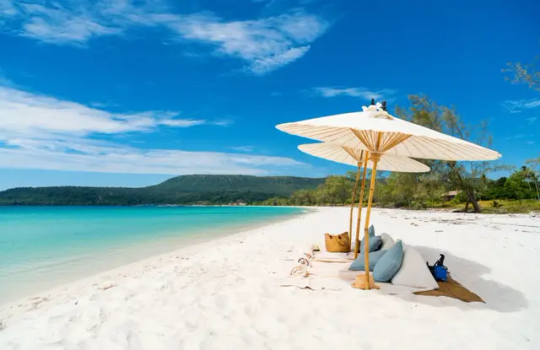
Each of these beaches has its unique charm, ensuring there’s something for every type of traveler. 6. Bioluminescent Waters

One of Koh Rong’s most magical experiences is swimming in its bioluminescent waters. At night, tiny plankton light up the sea, creating a surreal glow with every movement. This natural phenomenon is best seen on quieter beaches away from artificial lights. It’s like swimming among stars! 7. Jungle Adventures
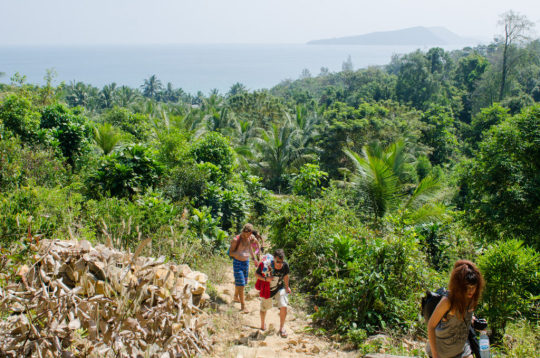
For those who love trekking, Koh Rong’s dense jungles are a treasure trove of discovery. Trails weave through verdant greenery, leading to waterfalls, hidden beaches, and panoramic viewpoints. Notable trails include: - The Hilltop Viewpoint Trail: Offering panoramic views of the island’s coastline. - The Jungle Walk to Sok San Village: A moderate trek that combines nature with cultural experiences. Along the way, you might encounter monkeys, colorful butterflies, and other wildlife.
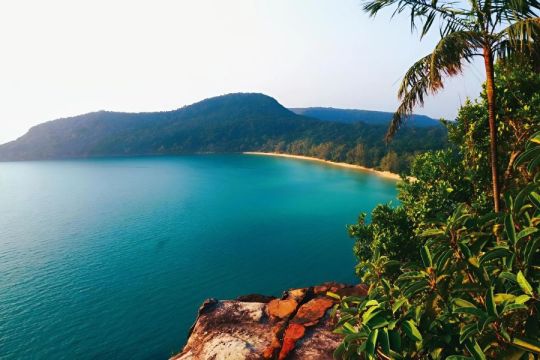
8. Island-Hopping Excursions

Koh Rong isn’t just about its main island. Take a boat tour to explore nearby islets like: - Koh Rong Samloem: Renowned for its tranquil vibe and eco-friendly resorts. - Koh Koun: A tiny, uninhabited island perfect for snorkeling and exploring. - Koh Thas: Ideal for picnics and quiet afternoons by the water. These excursions allow you to uncover even more hidden gems in the area.
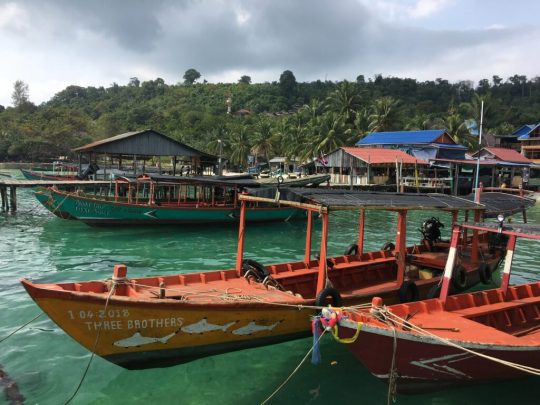
9. Sustainable Tourism Many parts of Koh Rong are dedicated to sustainable tourism. Local initiatives aim to preserve the island’s natural beauty, so you can enjoy it responsibly. Opt for eco-friendly accommodations and tours that support the local community while minimizing environmental impact.
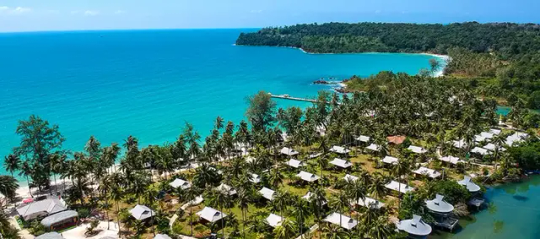
Tips for Visiting Koh Rong - Getting There: Ferries from Sihanoukville are the main way to reach Koh Rong. The journey takes about 45 minutes to an hour. - Best Time to Visit: November to April offers sunny weather and calm seas, perfect for beach activities and exploring. - What to Pack: Lightweight clothing, reef-safe sunscreen, insect repellent, and sturdy shoes for jungle hikes.

Final Thoughts Koh Rong is a paradise that combines adventure, relaxation, and natural wonders. Whether you’re seeking hidden beaches, bioluminescent magic, or the thrill of jungle exploration, this Cambodian island has something for everyone. Visit Koh Rong now and uncover its undiscovered charm before the secret gets out! Have you been to Koh Rong or dream of visiting? Bonus: Must-Try Activities on Koh Rong
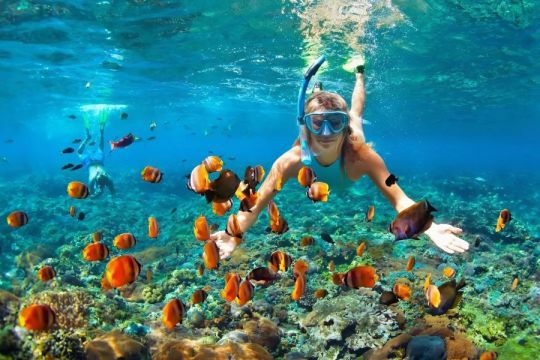
- Snorkeling and Diving: Explore vibrant coral reefs and swim alongside colorful fish. Koh Rong offers some of the best snorkeling and diving spots in Cambodia. - Kayaking: Paddle through calm waters and discover secluded coves and beaches. Some tours even let you kayak through mangroves. - Nighttime Fishing: Join local fishermen for an authentic experience. Learn traditional fishing techniques and enjoy a fresh seafood meal. - Cooking Classes: Immerse yourself in Cambodian culture by learning to prepare traditional dishes like Amok and fresh spring rolls. - Ziplining: For thrill-seekers, the High Point Adventure Park offers ziplining and rope challenges amidst the jungle canopy. - Visit Local Villages: Explore traditional fishing villages like Sok San and Daem Thkov to experience local culture and cuisine. - Stand-Up Paddleboarding: Glide over calm waters while enjoying breathtaking views of the coastline.
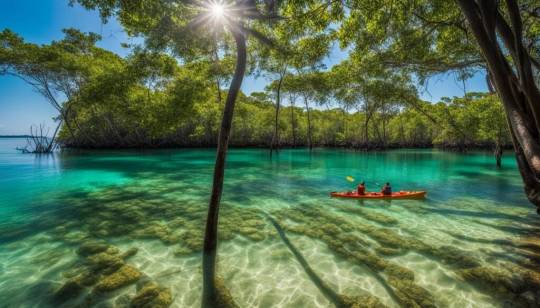
With so much to see and do, Koh Rong is more than just a beach destination—it’s an adventure waiting to happen. Don’t miss the chance to make unforgettable memories on this breathtaking island!Don’t miss the chance to make unforgettable memories on this breathtaking island!
Useful Hotel informations in Koh Rong Island:
Maloop Cafe Bungalow
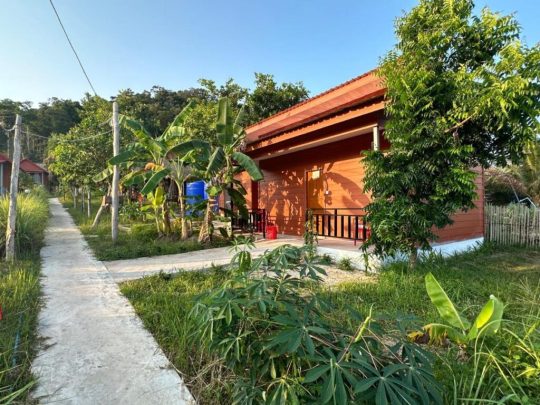
Tree House Bungalows
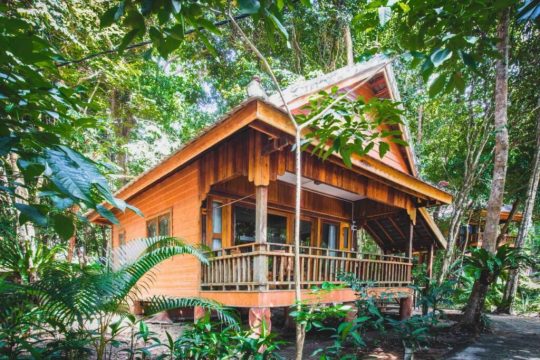
The Royal Sands Koh Rong



Read the full article
0 notes
Text
Sand Flea Rake
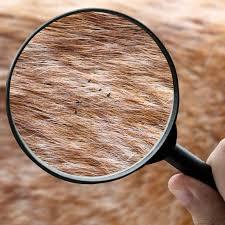
Sand Flea Rake Sand fleas, also known as beach fleas or sand flies, are not fleas. m they are tiny crustaceans living in sandy areas like beaches. They can bite humans and animals, causing itchy and sometimes painful reactions, so it is always a good idea to take precautions when visiting sandy areas. Do sand flea rake bite humans? Both joint sand and chigoe flea bites tend to occur on your ankles and feet. They might appear in soft, fleshy areas between your toes, heels, or toenails. Sometimes, people also get bites and skin irritation on their thighs, hands, groin, or genitals. What are sand flea rake, and how do you get them? The colloquial name "sand flea" describes a creature that isn't an insect but a crustacean in the family Talitridae that lives in sandy areas under rocks and vegetation debris and causes no harm to humans or pets. In some areas, they are called beach fleas or sand hoppers instead of sand fleas. What parasite is a bite of sand flea rake? Sandfleas are biting insects that belong to the family Psychodidae. They can transmit certain diseases, but their bites are generally more annoying than serious health threats. It is best to avoid areas where sand fleas are known to be present and use protective measures like wearing long sleeves and using insect repellent to prevent their bites. What diseases do sand fleas carry? Sand fleas can cause itching, irritation, and sometimes small, red, itchy bumps on the skin due to their bites. While their edges are usually not harmful, some people may develop allergic reactions or experience more severe itching. It's always a good idea to avoid areas where sand fleas are present and take preventive measures to protect yourself from their bites. How do you remove sand fleas? The best approach is to focus on preventing their bites. Here are a few tips: 1. Avoid areas where sand fleas are known to be present, especially during peak activity times. 2. Wear long sleeves, pants, and shoes to reduce exposed skin. 3. Use insect repellent with DEET or other effective ingredients. 4. Shake out your clothing and beach gear after spending time in sandy areas. 5. shower and wash your clothes thoroughly after being in potential sand flea areas. By taking these precautions, you can minimize the risk of getting bitten by sand fleas and avoid the hassle of removing them. Stay protected, and enjoy your time outdoors! How long can sand flea rake live in your body? The adult female sand flea burrows into the skin and grows 2000 times in size as eggs develop. The female flea typically lives for 4–6 weeks, when the eggs are expelled and fall to the ground. How long do sand flea bites last on humans? Common sand flea bites usually clear up in a few days. As for chigoe sand fleas, they eventually die and fall out of your skin, so the infestation usually resolves on its own. Most people don't experience it. Do sand flea rake leave scars? Pest Control for Sand Fleas How to treat sand flea bites. The large welts from sand flea bites may appear immediately or after a few days. Don't scratch – they can leave scars. Can sand flea rake live in my bed? Can fleas live in your bedding? Fleas can live in beds for about one to two weeks and burrow under sheets. Fleas need blood to survive, so they will only stay in one place for a short time if there is a food source. Do sand fleas lay eggs in the skin? Sand flea bites. Sometimes, but not always, the female sand flea lays her eggs underneath the skin; the large welts will have a black dot in the center. If that happens, you should seek medical attention because the black dot indicates eggs have been laid. What do sand fleas eat? sand flea rake: What are they? How to Avoid Them? Seaweed Although sand fleas primarily feed on organic debris such as seaweed and plankton, these critters occasionally bite humans. Female sand fleas are more susceptible to biting humans and use the protein from the blood as nutrition for laying eggs. What does salt do to sand flea rake? One way is by using salt, which kills off sand fleas. If you sprinkle salt on them, they often begin to lose water and eventually die. Allow the salt to stay for 24 hours before vacuuming, especially the carpet. Conclusion sand flea rake are biting insects that can cause itching and irritation with their bites. While they're usually more of an annoyance than a severe threat, avoiding their habitats and using protective measures is best to prevent their bites. Remember to wear long sleeves, use insect repellent, and shake out your clothing after being in the sandy areas. Read the full article
0 notes
Text

Planning a family holiday to Andaman requires a bit of research and preparation to ensure a smooth and enjoyable trip. Here are some tips to help you plan your family holiday to Andaman:
Plan your trip in advance: Andaman is a popular tourist destination, especially during the peak season from October to May. It is advisable to plan your trip in advance, book your flights and accommodation, and make all necessary arrangements to avoid any last-minute hassles.
Choose the right time to visit: Andaman has a tropical climate, and the best time to visit is from October to May when the weather is pleasant, and the seas are calm. However, if you want to witness the bioluminescent plankton, plan your trip between May to November.
Pack appropriately: Andaman is a beach destination, and you will spend most of your time outdoors. Pack light, comfortable clothes, and don’t forget to pack sunscreen, hats, and sunglasses to protect yourself from the sun. Also, pack some insect repellent as the island has mosquitoes.
Research the activities and attractions: Andaman offers a variety of activities and attractions for families. Research the options and plan your itinerary accordingly. Ensure that the activities are age-appropriate for your children and that you have enough time to explore everything you want to see.
Consider staying in a family-friendly resort: Andaman has many family-friendly resorts that offer amenities such as kids’ clubs, swimming pools, and entertainment programs for children. Choose a resort that suits your budget and preferences.
Try the local cuisine: Andaman’s cuisine is a fusion of various cultures, and trying the local food is a must-do. However, be mindful of your children’s preferences and any dietary restrictions.
Book activities in advance: Popular activities like snorkeling, scuba diving in andaman havelock, and boat rides may get booked up quickly during peak season. It is advisable to book these activities in advance to avoid disappointment.
Take necessary precautions: Andaman is a safe destination, but it’s always better to take necessary precautions. Keep an eye on your children, especially when they are playing in the water. Avoid venturing into uncharted areas without a guide and always carry a first-aid kit with you.
By following these tips, you can ensure a safe and enjoyable family holiday in Andaman.
0 notes
Note
so a theater near me is performing spongebob the musical and of course i plan on going but i was looking at the cast pages and idk why but i found it hilarious for plankton’s they fully put “sheldon j plankton” while mr krabs is just “mr krabs” lol
Ya see its because plankton deserves to be called by his full name. SHELDON lookin mf. Also as a repellent against fangirls who like their bootleg single celled organism edition of Goro Majima. Mr. Krabs on the other hand deserves more respect hence only addressing him formally.
Jk jk but it is funny that they'd go by full name for one and not the other. Its clearly not for easy recognition. I'm just guessing plankton's full name is funnier.
Also LUCKYYY hope ya enjoy seeing your SB musical. Wishing you the best of luck! Please share show the actors for your musical looks like pleeaaase
13 notes
·
View notes
Note
omg oops sent my message too soon! i was going to say, the vapor suits are actually just that! they’re vapor! they don’t have any physical material apart from a button that enables them, but they are basically just a magic forcefield around your body while you swim in the Ethersea. so Amber doesn’t have psychic arm bags, her suit is intangible, so in that scene she literally turned off her entire vapor suit and was submerged in the water, and then she turned it back on and when it re-engaged, the force of it repelling the water away from her body is what cut the blink shark! they created the vapor suits in the prologue of Ethersea which was a while ago, and i just wanted to let you know for future fanart :3 Amber is so good, she’s my fave character so far
Ohhhh! Thank you! I vaguely remembered something about them being membranous but wasn’t sure. I will keep this for future ref. My microbiology / plankton knowledge will come in handy > : ) cell membranes for DAYS. I did base the “circulatory” system on some branching green algae.
6 notes
·
View notes
Text
Shipworm
I. Classification
Animalia
Bilateria
Protosomia
Lophozoa
Mollusca
Bivalvia
Heterodonta
Myoida
Teredinidae
Teredo
Teredo navalis
Source: Integrated Taxonomic Information System, Teredo navalis (Linaeus, 1758)
II. Biology
Where WOOD we find them? The shipworm or the Teredo navalis can tolerate low salinity levels but usually flourish in marine environments, for both temperate and tropical regions.
Basically known in all the oceans of the world, except for the Antarctic, most probably because this species can only tolerate temperatures ranging from 15 to 25 degrees Celsius (Didziulis, 2007). Shiver me timbers am I right?
These animals are usually found living in submerged wood like in piers, ships or driftwood.
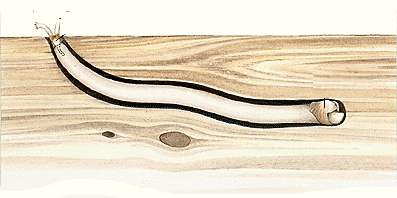
Image retrieved from https://www.waterwereld.nu/shipworm.php
More often than not, shipworms deal a significant amount of damage to submerged wooden structures as they bore themselves into the wood, creating a series of holes that make the structure less stable.

Image retrieved from https://kids.wng.org/node/4220
WORM or NOT WORM… that is the question

Image retrieved from scholararchive.ohsu.edu Yes this species does look like a worm BUT it is actually a type of bivalve! There are two tri-lobed shells covering its head, using them to bore into the wood. The shells themselves have small teeths on it’s valves and are used as the main tool for boring (Mann & Gallagher, 1985). At the posterior end of the shipworm are two retractable siphons, the incurrent one act as another method of feeding, filtering planktons, and a way to obtain oxygen (Lane, 1959), While the excurrent one act as a waste and sperm exit (Didziulis, 2007). T. navalis can grow up to 20 - 25 cm, sometimes even 35 cm (Paalvast, P. and van der Velde G., 2011). How do they DO IT?

It is not clear but researchers inferred that the reproduction of T. navalis is polygynandrous, where the males would release the sperm and the females use their siphon to obtain it. (NIMPIS, 2011)
After being fertilized, the larvae of the T. navalis is incubated in a brood pouch found at the gill chamber of the female. After 2 weeks, they are released. These larva then proceed to feed on planktons, then they settle and form a shell which at first is singular but would later on be bivalved. They then reach sexual maturity at around 6 - 8 weeks after settlement (NIMPIS, 2011).
T. navalis alternate sexes during the entirety of their life, half of their gonads are spermatocytes while the other half are ovocytes. (Coe, 1943)
What’s the grub?
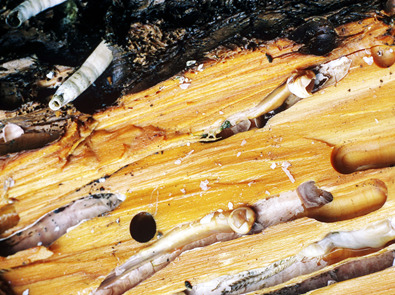
Image retrieved from: https://www.wired.com/2017/04/mystery-5-foot-long-shipworm-just-got-stinkier/
T. navalis is known to mainly feed on wood, as they produce enzymes from nitrogen fixing bacteria that help them consume the nutrients found there. With the absence of wood however, shipworms feed on planktons by filtering them using their siphons (Paalvast and van der Velde, 2013).
The Invasion
Ever seen that Spongebob Squarepants episode where Bikini Bottom was attacked by worm-like organisms eating everything in its path? The one where they called them nematodes?
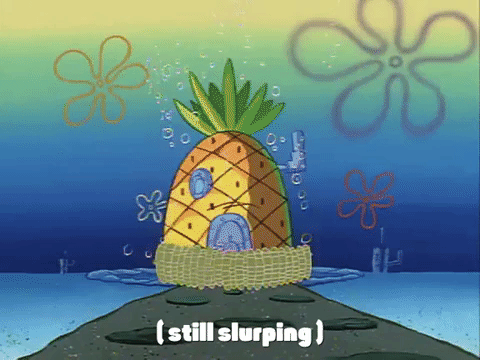
GIF retrieved from https://gifer.com/en/3aqX
Well we hate to break it to you Bikini Bottom fans, those aren’t nematodes, but actually shipworms! Obviously they over-exaggerated the episode for comedic effect, but they did get one thing right, the organism is indeed INVASIVE.
It is believed that the shipworms came from the hulls of wooden ships that usually came from Europe (Carlton, 1999). These molluscs then proceeded to establish themselves and repopulate in different areas of the world, annoying ship-builders and dock workers alike for generations to come.
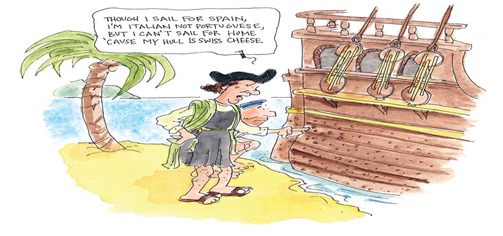
Image retrieved from: https://seahistory.org/sea-history-for-kids/ship-worm-clam/
III. Humans and Shipworms
The Shipworm or the Ship-Sinking Clam as known by many seafarers plagued docks and dikes in the early 1500s. It was in 1503 when two vessels of world renowned explorer, Christopher Columbus, sank because the common shipworm, Teredo navalis, decided to burrow in its hulls. Among other ships sunk by this pesky mollusk are: Essex (the Nantucket whaling ship that inspired the novel Moby Dick) and the Spanish Armada.
Because of their plague-like existence, early seafarers tried to counteract them with chemical concoctions that polluted waterways; dynamite in water; and even so far as deforestation in the hunt for finding repellent wood.
In other related news, Dan Distel and Reuben Shipway, specialists studying shipworms from Northeastern University believe that enzymes found in the shipworm can be utilized for biofuels from wood waste and that the antibiotic found in shipworms that help them maintain certain bacteria in their gills may offer treatment to human diseases.
IV. Interesting Facts
According to Britannica, the species under the genus Teredo are the most destructive among the shipworms.
youtube
Today, only some regions in Southeast Asia, notably in the Philippines and Thailand, harvest and consume shipworms. In these parts, shipworms are a delicacy (Willer David F., Aldridge David C. 2020).
youtube
In a news article by BBC News, it was reported that the first live specimens of the giant shipworm were found in the Philippines. The shipworms were found in Mindanao, Philippines but the exact location is kept a secret.
The jet-black color of the shipworm surprised the scientist since most bivalves are cream in color. And the shipworm was also very muscular despite being in the shell its entire life.
Kuphus polythalamia or the giant shipworm burrow in marine sediments rather than wood. Specimens have also reached 155 cm in length and 6 cm in diameter (Distel et al., 2017).
The Zachsia zenkewitschi is the sole representative of the genus Zachsia. These species bores in seagrass rhizomes. They also exhibit sexual and size dimorphism. They maintain large harems of male dwarfs within a specialized cavity of the female mantle. The species also have specialized brood pouches within the gill where they give maternal care for the larvae (Shipway et al., 2016).
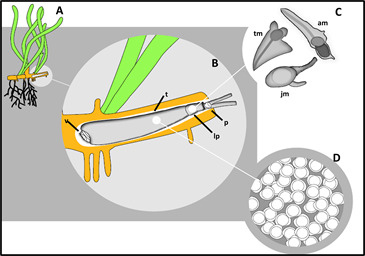
Diagram showing the life stages of the rhizome-boring bivalve Zachsia zenkewitschi.
Image retrieved from:https://journals.plos.org/plosone/article?id=10.1371/journal.pone.0155269
V. Sources
Carlton, J.T (1999). Molluscan Invasions in Marine and Estuarine Communities, Macologia. Vol. 41, no. 2, pp. 439-454.
Coe, W. (1943). Development of the primary gonads and differentiation of sexuality in Teredo navalis and other pelecypod mollusks. Biological Bulletin, vol. 84: 178-186.
Didziulis, V. (2007). "NOBANIS-invasive alien species fact sheet, Teredo navalis". NOBANIS-European network on invasive alien species. Retrieved October 17, 2020, from http://www.nobanis.org/files/factsheets/Teredo_navalis.pdf.
Distel, D. L., Altamia, M. A., Lin, Z., Shipway, J. R., Han, A., Forteza, I., . . . Haygood, M. G. (2017). Discovery of chemoautotrophic symbiosis in the giant shipwormKuphus polythalamia(Bivalvia: Teredinidae) extends wooden-steps theory. Proceedings of the National Academy of Sciences, 114(18). doi:10.1073/pnas.1620470114
Gilman, S. H. M. (2016, December 5). How a Ship-Sinking Clam Conquered the Ocean. Retrieved October 17, 2020, from https://www.smithsonianmag.com/science-nature/tunneling-clam-bedeviled-humans-sank-ships-conquered-oceans-180961288/
Lane C.E., (1959). Some aspects of the general biology of Teredo. In: Marine boring and fouling organisms, [ed. by Ray DL]. Seattle, USA: University of Washington Press. pp. 137-144.
Live, long and black giant shipworm found in Philippines. (2017, April 18). Retrieved October 18, 2020, from https://www.bbc.com/news/world-asia-39626131
Mann R., Gallager S.M., (1985). Growth, Morphometry and Biochemical Composition of the Wood Boring Molluscs Teredo navalis L., Bankia gouldi (Bartsch), and Nototeredo knoxi (Bartsch) (Bivalvia: Teredinidae). Journal of Experimental Marine Biology and Ecology, no. 85, pp. 229-251.
NIMPIS (2011). "Teredo navalis, general information". National Introduced Marine Pest Information System. Retrieved October 17, 2020 from http://adl.brs.gov.au/marinepests/index.cfm?fa=main.spDetailsDB&sp=6000016293.
Paalvast, P., van der Velde G., (2013). What is the main food source of the shipworm (Teredo navalis)? A stable isotope approach. Journal of Sea Research, vol. 80, pp. 58-60.
Paalvast, P., van der Velde G., (2011). Distribution, settlement, and growth of first-year individuals of the shipworm Teredo navalis L. (Bivalvia: Teredinidae) in the Port of Rotterdam area, the Netherlands. International Biodeterioration & Biodegradation, vol. 65, no. 3, pp. 379-388. Retrieved October 17, 2020, from https://www.sciencedirect.com/science/article/pii/S0964830511000035
doi: 10.1016/j.ibiod.2010.11.016
Willer David F., Aldridge David C. (2020) From Pest to Profit—The Potential of Shipworms for Sustainable Aquaculture. Frontiers in Sustainable Food Systems. Vol 4 p 164 https://doi.org/10.3389/fsufs.2020.575416
4 notes
·
View notes
Text
Blessings
لا إله إلا الله محمد رسول الله (There is no deity but God; Muhammad is the messenger of God.
Hope in God
Faith in God
Family; mom, dad, siblings, musang
prayer time
Ramadan/ fasting
health
free air to breath everyday, ever second (FREE) setiap detik.
teachers
code name toshiro; ryu; starfruit sometimes pineapple
clean water to drink
heartbeat
good books to read
intellect (brain)
"pancaindera" - five senses
menstrual cycles
watch
roof over my head
work
always have good food to eat
blanket, bed, pillow, air conditioner, gadgets
toiletries
perfumes
beautiful garments
washer machine
rice cooker
stove
vacuum cleaner
water jet
car
well intact toilet at home
blue velvet scrunchie
own room
time for leisure
a lot, a lot, a lot! wont be able to list it all down
electricity
stars
moon
sun
trees
forest
river
ocean
fish
pearl
squid
prawn
crab
shark
"ikan todak"
plankton
airplane
boat/ship/sampan
chicken
cow meat/mutton/lamb
technology
beautiful blue skies with clouds
rain
thunder
lightning
wind
beautiful sound of birds
flowers
butterfly
leaches
cats
home
vegetables
antibiotic
corona viruses
vaksin
cough syrup
salmon
potatoes
bees
liquid gold- honey
plates
bowl
drinking glass
safe environment
vanilla milkshake
chocolate ice cream
public transportations
highways
roads
swimming pool
durian
mangosteen
coconut water
umbrella
raincoat
insect repellent
sweet incense (bakhoor)
tamar
zamzam water
cider
shoes
slipers
bags
socks
understanding
able to sleep
able to still wake up
able to think
tea
salt
sugar
maps
sign board
traffic light
rules and regulations
doctors
mountains
stairs
escalator
elevator
beautiful mosque
stationaries
hairbrush
and moreeeeeeeee! i will continue it later. TBC, Insha Allah
0 notes
Photo





Coral reefs are home to a quarter of all marine species, so it is fitting that they are the focus of Blue Planet II’s third episode. Exploring the vast array of different marine life that live here – from green turtles and bottlenose dolphins, to manta rays, octopuses, and parrotfish – the episode will demonstrate how these different creatures have adapted to survive in these underwater mega-cities. However, rising temperatures are having a devastating impact on the world’s coral reefs, so undertaking measures to halt the effects of coral bleaching has never been more crucial.
Explore our latest collection about the coral reef environment below:
Coral reefs are one of the most productive ecosystems on the planet, with primary production rates compared to that of rain forests. Benthic organisms release 10-15% of their gross organic output as mucus that stimulates microbial metabolism, and as a result coral reef microbes grow up to 50 times faster than open ocean communities.
Coral reefs are also 'choral' reefs, with many fishes producing specific sounds for courtship and spawning rituals. New research is even showing that larval reef fishes may use these sounds emanating from coral reefs to navigate during migration.
Manta rays are one of the most charismatic species of rays, but there has been uncertainty around their taxonomy for some time. Not anymore, however: scientists have recently discovered that manta rays are, in fact, a type of Mobula ray, or “devilray”. As a result, all types of manta ray have been reclassified as devilrays, and the genus Manta, has been removed from existence.
Female southern blue-ringed octopuses don’t need wingmen (tentacle-men?) to help them find potential mates. They choose to go it alone, having evolved to be able to smell male octopuses. What’s more, it’s possible they are able to mask their own scent to potentially disguise themselves from unwanted suitors.
Green turtles are endangered marine herbivores that break down food particles, primarily sea grasses, through microbial fermentation. However, the microbial community and its role in health and disease are still largely unexplored; by studying stranded and wild turtle populations in the Great Barrier Reef, we can learn more about this method of digestion.
Even though tiny little planktonic copepods live in the depths of coral reef waters, scientists have discovered that their diets are largely made up of terrestrial plants, such as tropical or subtropical plants located around Sanya Bay, China. It’s even been suggested that pollen could be food-of-choice for copepods.
On the coral reefs of New Caledonia, a recent study found that the fish that live there have come up with a series of tactics to repel their main predator, turtle-headed seasnakes. Blennies and gobies focused their attacks on snakes physically entering their nests, whereas damselfish attacked passing snakes as well as nest-raiders. The fish most commonly bite the snakes to deter them, although damselfish and blennies also slap snakes with their tails.
Today coral reefs are suffering from numerous pressures. Industrial pollution, shoreline alterations, diseases of corals, and over-extraction of fish, invertebrates, and even the limestone rock itself, have all contributed to the demise of about one third of the world's reefs. More recently, climate change, notably a rise in sea temperature, has led to coral bleaching and then the death of component corals. Increased CO2 in the atmosphere has also been recorded as leading to the disruption of shoaling behaviour in fish.
With rising global temperatures leading to coral bleaching and endangered reefs, you’d think that would be all these undersea mega-cities have to be concerned about. But their residents aren’t making life easy either! Corallivorous snails eat and purposely damage coral reefs in sporadic, large-scale attacks that scientists refer to as ‘plagues’, ‘invasions’, or even ‘population outbreaks’, indicating the level of destruction these snails wreak on coral. Certain snails have also adapted to be able to burrow into sand on coral reefs, further damaging their coral home.
Corals rely on photosynthesis to form the basis of tropical coral reefs. High sea surface temperatures driven by climate change can cause coral bleaching, leading to declines in coral health. However, not all species of coral struggle with increasing temperatures so much, due to a thermo-tolerant adaptation to protect against coral bleaching.
Images: 1) Coral Reef by marcelokato. 2) Underwater by marcelokato. 3) Fish by joakant. 4) Swimming by Pexels. 5) Clown fish by Pexels. All public domain via Pixabay.
#coral reefs#blue planet 2#blue planet II#Blue planet#marine science#marine biology#sea turtles#great barrier reef#climate change#global warming#manta ray#mobula ray#fish#photosynthesis#science#life science#biology#octopus#Oxford Journals#Online Products
492 notes
·
View notes
Text

Well, with the surface being the ocean floor, "deeper" on Ocaelum means up as much as it means down in the core. The pressure is also inverted but I don't have as clean an explanation for that as the rest so, uuuuh, magic ! (There's a bit more but it'd be slightly "spoilery" ). Warmth comes from the core and its "sun" (that's not actually a visible sun anywhere in it almost). Light and oxygen are both provided by the local equivalent of photosynthesis though, taking magic, heat and water (and repelling the latter) and turning them to oxygen and light to feed the plant. It's in activity in plankton but also on a larger scale for the fungal life and Lifetrees.
Planeswalker’s Guide to Ocaelum
(Ocaelum is a world originally created by @gentlesmolgruulgal and developed later by herself and I. She then kept on working on the world and turning it into a D&D setting as I, on my end, kept coming back to it regularly as Arnoss’s home plane and a very fun place. The two diverged on many points since into two versions of the same world, but most of the base concepts are from @gentlesmolgruulgal, presented here within my version of the world with her permission. All art of the world presented here, within cards or on their own, are also by her skillful hand, and used with her permission. Without further ado, let’s jump into the proper guide. Be warned, it is fairly lengthy.)
Ocaelum is a rarer type of plane, one that mostly exists underwater. The most active place is on the floor, between the caverns of the Elder Smiths and the colder waters of the upper depths. There, people used to worlds with air and flying suns will feel most at home, living among elves and humans under the care of the Lifetrees. The currents between those are the paths of the Family, trading and exchanging with everyone who agrees to it. Above are the waters of the secretive merfolks known as the Vhigg'ithu, though most of them claim that their empire spans all of Ocaelum. Below the ground, you’ll find breathable air once again, if in an even more closed environment. The old dragons and their dwarven followers live in a vast network of caves and tunnels, according to them both their cradle and their creation. It is lit dimly by bioluminescent mushrooms and the occasional molten rock. Whether natural or artificial in origin, large parts of the system have definitely been carved and remade in service of the underground civilizations.
One cannot mention bioluminescence without explaining the peculiarity of Ocaelum’s waters. On most planes, water gets darker, colder and more oppressive the closer you get to the ocean floor. On Ocaelum, that process works in reverse, with water near the ground being relatively bright, warm and comfy compared to the somber waters above. It is hard to ask locals about this phenomenon since it’s the norm for them, but there’s mentions of a “sun below” which could explain the temperatures, and the Lifetrees themselves generate light from the water around them and the leylines they’re rooted on. It is hard not to wonder what’s above, beyond all this water. But even if the merfolks didn’t pose a threat to anyone who would go look, the conditions quickly become unlivable for anyone but them. Attempts to planeswalk to Ocaelum on higher ground or waters have not proven successful yet.
Keep reading
37 notes
·
View notes
Text
Island Thoddoo
I have visited Thoddoo 3 times in the last 3 years. Not so regularly I visit it, unlike Rasdhoo or Ukulhas. But in recent years it has become mega-popular among tourists from Russia, Ukraine and the CIS countries.
The island is located 67 km west of the capital Male. And 20 km north of the administrative centre of North Ari Atoll – Rasdhoo. Thoddoo is a fairly large island by Maldivian standards – about 2 x 1 km. Moreover, a third of the island is reserved for farms, another third is the village, and the rest is the jungle. The population of the island is about 1400 people.
Unlike many other islands, it is located as if separately.

Beach and snorkelling on Thoddoo
Due to its size, Thoddoo offers magnificent beaches for tourists. Nowadays, there are two tourist beaches on the island located on opposite sides of the island.
Interesting fact: even in spite of its size, both tourist beaches are smaller in total than the beach on Ukulhas.
The first beach is located in the southern part of the island. It takes about 15 min from the nearest hotel to reach, the path passes through fruit farms. A great option, in this case, is a bicycle. Almost every hotel provides it.
The boundaries of the beach are conventionally marked by a fence of dry palm leaves. The beach is very clean and well maintained, but small. During high season it can be crowded. Therefore, everyone lacks sun loungers and hammocks (unlike Ukulhas, where there are much more). It’s very convenient to have a shower and toilet on the beach as well.
Tropical trees grow along the coast, through which numerous paths lead to the water. However, there is only one entrance to bikini beach. The sand itself is so white and you can walk on it without fear of cutting yourself on glass or dead coral. The water is clean and with almost no floating debris.
Thoddoo house reef is very long. However, there are not so many places for snorkelling. A small reef is located very close to the bikini beach. there are only a couple of corals and several species of fish. A truly beautiful reef with many fish (and even stingrays and sharks) is located off the coast – about 400 m.
I swam there without fins and don’t recommend it because you get tired while you swim back and forth. And if there is also a side stream, then spend all your energy while you swim to the reef. But it worth it. At the same time, from my own experience, I’d say the outer reef is not as rich of animals and fish kingdom as Rasdhoo. But corals are in better condition.
Never swim there alone! The currents can be very strong and you will not notice how quickly you move away from the coast!

The second beach is located in the north-eastern part – behind the stadium. From some hotels, it’s only 5 minutes walk. It’s smaller than the south beach, but there are also not so many tourists. There are sunbeds, hammocks for a comfortable stay. The advantage of this beach is the closeness of a house reef, which is only 200 m away. At the edge of the reef, I saw turtles, eagles and even manta rays! But not so many fish and sharks.
They say that on the beach you can see the fluorescent plankton! Unfortunately, I’ve never seen it, but I saw it at Rasdhoo and Adaaran Vaddhoo Resort.
The island is quite large and it will take a time to explore it on foot. Therefore, a good way is cycling. During morning or evening time you can easily go around the island and see what it is outside of the tourist beach.
Like other local islands, wildlife on Thoddoo is not very diverse. On the shore there are many crabs and hermit crabs of various sizes. I saw how hermit crabs used a coconut shell, glass bottom, a bottle cap. In general, what they find is used as a home.
You can find gray herons on the beach sometimes. If she likes you, she will let you to step closer. When it gets dark, you can see flying foxes sweep overhead. They are not dangerous to humans and eat fruits. From reptiles – small iguanas and very small geckos.
Well, mosquitoes, which are quite a lot on Thoddoo (depending on the season), unlike the neighbouring Rasdhoo. Therefore, stock up on repellents. Most of them are near plantations, and not everywhere, but only in some places.

What else to do on Thoddoo?
Snorkelling safari. There are two places for safari snorkelling: near Thoddoo and at Rasdhoo Atoll. In the first case, you will snorkel with turtles on a house reef. In the second case – visit three spots in Rasdhoo Atoll. What to choose? I would recommend both options because in this case you will see how diverse and amazing the underwater world of the Maldives is.
Visit uninhabited islands. They are next to Rasdhoo.
Local farm tour. Such entertainment you can provide by yourself or find a local who will tell you and show everything, or ask a manager at the hotel. Thoddoo is one of the few islands in the Maldives that exports fruits and vegetables to other islands. Papaya, watermelons, bananas, coconuts, etc. are growing here. If you want to pick fruits from trees, please, firstly ask permission from the locals.
Dolphin safari. An evening safari with a school of friendly dolphins that swim so close to the boat that you can try to touch them!
Manta ray snorkeling. Mantas are the largest rays on the planet. The span of their wings can reach 6m! They feed only on plankton, so you shouldn’t scarry about it. There is a cleaning station near Thoddoo, where mantas come. I was snorkelling and diving there. The second option is better because mantas prefer to swim in deep water.
Night fishing. Maldives is the place where everyone can try to catch fish using only the fishing line, hook and bait. Moreover, it is often ladies and children who are more successful than gents! Fish can be grilled at the hotel.
Scuba diving. Two dive centers are now open on the island. I highly recommend everyone to try diving in Maldives (no matter which island) because, after that, your thoughts about underwater world will change forever! The beginner’s course includes theory class, skill training in shallow water and the dive itself with an instructor.
If you are a certified diver, then I will disappoint you – all places for diving are in Rasdhoo Atoll. Therefore, if you have plans for diving, it’s better to take a few nights on Rasdhoo.
Infrastructure
The island has everything you need: a hospital, a school and a kindergarten, a gym and a football field. Two large mosques, one of which was built long enough.
The island has several restaurants and cafes where you can try local courses. I wouldn’t say there is huge price difference. More or less it’s the same. The food on Thoddoo, as well as on other local islands, is not very diverse. Rice, tuna, fried chicken, noodles with chicken, vegetables, etc.). Tuna and coconut milk soup. Pancakes with tuna and coconut. Casserole with tuna and rice, all kinds of tuna pies. And of course, a variety of fresh. On average, a dinner costs $US 10-10 pp.
Where to eat: in a hotel or in restaurants? It depends on the hotel, if you have a good chef, then in the hotel the quality of the food will be definitely better. In this case, the cost will be the same on average.
At local stores, you can buy fruits, juices, drinks, groceries and other necessary stuff.
If you look at Thoddoo on Google Maps, you will see that some hotels are located closer to the beach – Ari Heaven Thoddoo, Thila Farm View, Summer Stay Thoddoo than others. In fact, they are not located there, but in the village. Local laws do not allow building hotels only in a certain area located in the village.
Why is that?
Unlike many local islands, where tourism is developed, Thoddoo is a bit different. Many people on the island are doing farming and sell their products both to resorts and to the capital. Therefore, they do not want to give their land for the construction of another hotel.
Where to stay?
For the last 4 years, I’ve had an exclusive partnership (the best prices for accommodation and excursions) with Relax Residence. This is one of the first hotels on Thoddoo, and during this time they are constantly improving their reputation. Now they are No. 1 hotel on Thoddoo by reviews from Tripadvisor users and has a rating of 9.4 on Booking based on 180+ reviews
In addition to excellent service, Relax Residence is for adults only hotel. Children under 16 years old are not allowed to stay. Such concept is rare to see in Maldives.
The hotel has 2 blocks: a 3-floors building with a balcony and a one-floors block with a lounge area. Free water, tea, coffee, snorkeling kit, towels are provided.
Relax Residence is not the cheapest hotel on Thoddoo, but the quality of service provided is worth it.
Transfer To Thoddoo
Public ferry
Cost: $15 one way, per person (the traveling time is about 5 hours).
Departure from Male: every day at midnight (except Thursdays and Fridays).
Departure from Thoddoo: every day at midnight (except Thursdays and Fridays).
NOTE: as its private ferry it can go earlier or be cancelled.
Scheduled speedboat
Cost: $35 one way, per person (the travelling time is approximately 1 hour).
It��s available every day, except of Friday
Departure from Male to Thoddoo: at 11:00 and 16:00.
Departure from Thoddoo to Male: 07.00.
0 notes
Text
Planctophob – D.A.H.T. Exclusive Podcast #09
Planctophob – D.A.H.T. Exclusive Podcast #09
Tracklist Planctophob – Orbitoclast [Plankton Repellent] *unreleased Planctophob – Brain Fog [unsigned] Mental Vision – Hate Me Now (Planctophob Remix) [unsigned] Planctophob – Dying…
View On WordPress
1 note
·
View note